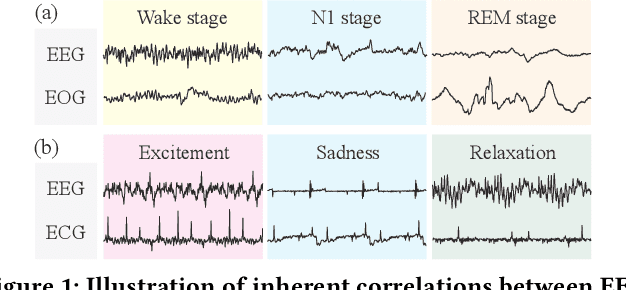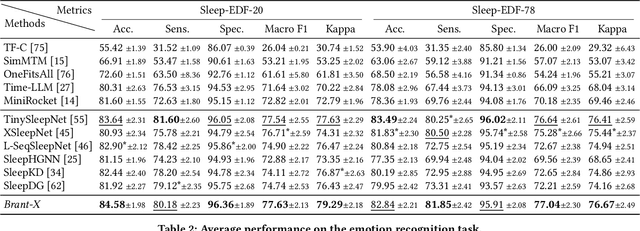Zhizhang Yuan
Deep Learning-Powered Electrical Brain Signals Analysis: Advancing Neurological Diagnostics
Feb 24, 2025Abstract:Neurological disorders represent significant global health challenges, driving the advancement of brain signal analysis methods. Scalp electroencephalography (EEG) and intracranial electroencephalography (iEEG) are widely used to diagnose and monitor neurological conditions. However, dataset heterogeneity and task variations pose challenges in developing robust deep learning solutions. This review systematically examines recent advances in deep learning approaches for EEG/iEEG-based neurological diagnostics, focusing on applications across 7 neurological conditions using 46 datasets. We explore trends in data utilization, model design, and task-specific adaptations, highlighting the importance of pre-trained multi-task models for scalable, generalizable solutions. To advance research, we propose a standardized benchmark for evaluating models across diverse datasets to enhance reproducibility. This survey emphasizes how recent innovations can transform neurological diagnostics and enable the development of intelligent, adaptable healthcare solutions.
Brant-X: A Unified Physiological Signal Alignment Framework
Aug 28, 2024



Abstract:Physiological signals serve as indispensable clues for understanding various physiological states of human bodies. Most existing works have focused on a single type of physiological signals for a range of application scenarios. However, as the body is a holistic biological system, the inherent interconnection among various physiological data should not be neglected. In particular, given the brain's role as the control center for vital activities, electroencephalogram (EEG) exhibits significant correlations with other physiological signals. Therefore, the correlation between EEG and other physiological signals holds potential to improve performance in various scenarios. Nevertheless, achieving this goal is still constrained by several challenges: the scarcity of simultaneously collected physiological data, the differences in correlations between various signals, and the correlation differences between various tasks. To address these issues, we propose a unified physiological signal alignment framework, Brant-X, to model the correlation between EEG and other signals. Our approach (1) employs the EEG foundation model to data-efficiently transfer the rich knowledge in EEG to other physiological signals, and (2) introduces the two-level alignment to fully align the semantics of EEG and other signals from different semantic scales. In the experiments, Brant-X achieves state-of-the-art performance compared with task-agnostic and task-specific baselines on various downstream tasks in diverse scenarios, including sleep stage classification, emotion recognition, freezing of gaits detection, and eye movement communication. Moreover, the analysis on the arrhythmia detection task and the visualization in case study further illustrate the effectiveness of Brant-X in the knowledge transfer from EEG to other physiological signals. The model's homepage is at https://github.com/zjunet/Brant-X/.
* Accepted by SIGKDD 2024
Brant-2: Foundation Model for Brain Signals
Feb 22, 2024Abstract:Foundational models benefit from pre-training on large amounts of unlabeled data and enable strong performance in a wide variety of applications with a small amount of labeled data. Such models can be particularly effective in analyzing brain signals, as this field encompasses numerous application scenarios, and it is costly to perform large-scale annotation. In this work, we present the largest foundation model in brain signals, Brant-2. Compared to Brant, a foundation model designed for intracranial neural signals, Brant-2 not only exhibits robustness towards data variations and modeling scales but also can be applied to a broader range of brain neural data. By experimenting on an extensive range of tasks, we demonstrate that Brant-2 is adaptive to various application scenarios in brain signals. Further analyses reveal the scalability of the Brant-2, validate each component's effectiveness, and showcase our model's ability to maintain performance in scenarios with scarce labels. The source code and pre-trained weights are available at: https://github.com/yzz673/Brant-2.
 Add to Chrome
Add to Chrome Add to Firefox
Add to Firefox Add to Edge
Add to Edge